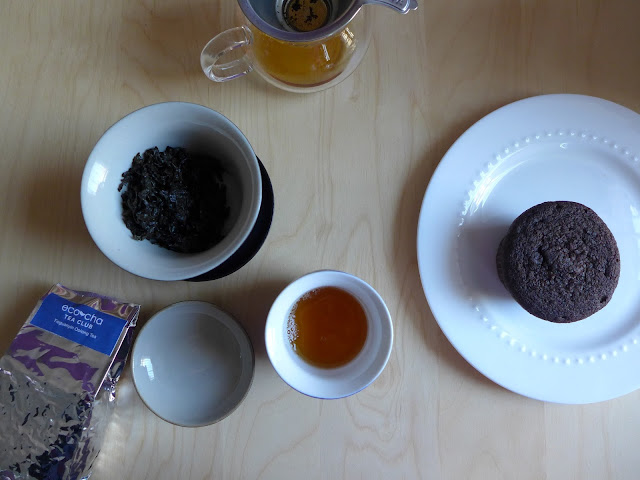I haven't done a restaurant post in a long time since I've been busy these last few months and also been focusing on tea, so sticking with the tea theme, here is a new tea shop/house.
Latea Era - "The new era of tea" is their slogan.
I'm not too sure about that, but they are trying to do something a little different.
So what is a "cheese crown"? It's their specialty cream cheese topped tea drinks which means a salty liquid cream cheese mix sits on top of tea. It may sound gross, but it wasn't too bad and if you are a sweet and salty combo type person, this may appeal to you.
I didn't think I'd get the best tea here so opted for something pretty, the cheese crown rose oolong. I had it hot but they do make it cold as well. It did look pretty and the cheese did stay at the top for a very long time. Overall I think it's like drinking a tea and your dessert at the same time, but the tea flavour isn't as strong as I'd hoped. If you like the sea salt cream topping at other teashops, you may like this.
I'm not sure how the salty topping of tea really started but it may have been the coffee and dessert chain 85°C in Taiwan in 2008. Maybe the trend dates back further but the chain offered coffee with a sea salt cream topping and when I had it in Taiwan in 2009, it was not bad - it was quite unique. I believe tea followed after the success of coffee.
However, if you want to consider who initially added salt to tea, traditional Tibetan butter tea is made with brick tea (puer or black), (yak) butter and salt so this may be the first creation of tea with salt.
Anyway, for a few years now in Toronto, there are a number of locations offering this salted cream topping: Gong Cha, Share Tea, Chatime. Latea Era also offers a salty cream topping but they go one step further and making a salty cream cheese topping. I'm not sure of how many other places offer a cream cheese topping in Toronto but I have heard Happy Lemon does; I have yet to go.

The only thing is I don't know where this tea house comes from, how it originated, who started it, is it in other countries? It just seemed to pop up and their website states it's their first North America location. In the last six months there has been numerous tea places that have popped up in Toronto; very exciting!
They brew their teas on the spot which can slow the line down but does ensure freshly brewed tea and their tea bags are on display. If you want a regular bubble tea they do offer that, some fruit teas, and matcha options. Their regular milk tea is brewed with an espresso machine and I also ordered one to go with tapioca. Unfortunately I wasn't a fan of their basic milk tea as I found the tea not as smooth. There was a bit of char taste to it too which could be the type of tea or the espresso machine extracting unwanted flavours from the tea. Half sugar is a little less sweet than half sugar requests at other tea shops. The tapioca was also not the best but I did go early afternoon on a Wed so that could be why.
 |
| At the back |
This place has lots of seating so great for groups, studying and when you just want to sit in a nice space instead of getting take-out. Cafe music playing in the background makes for a more modern ambience. Service was also polite and friendly.
Would I go back?
Yes, to try their matcha options, but based on the drinks I did try...it's probably not my cup of tea. Maybe their matcha will be the drink that keeps me coming back.
 |
| Lots of cream cheese topping at the end. |
Latea Era




























